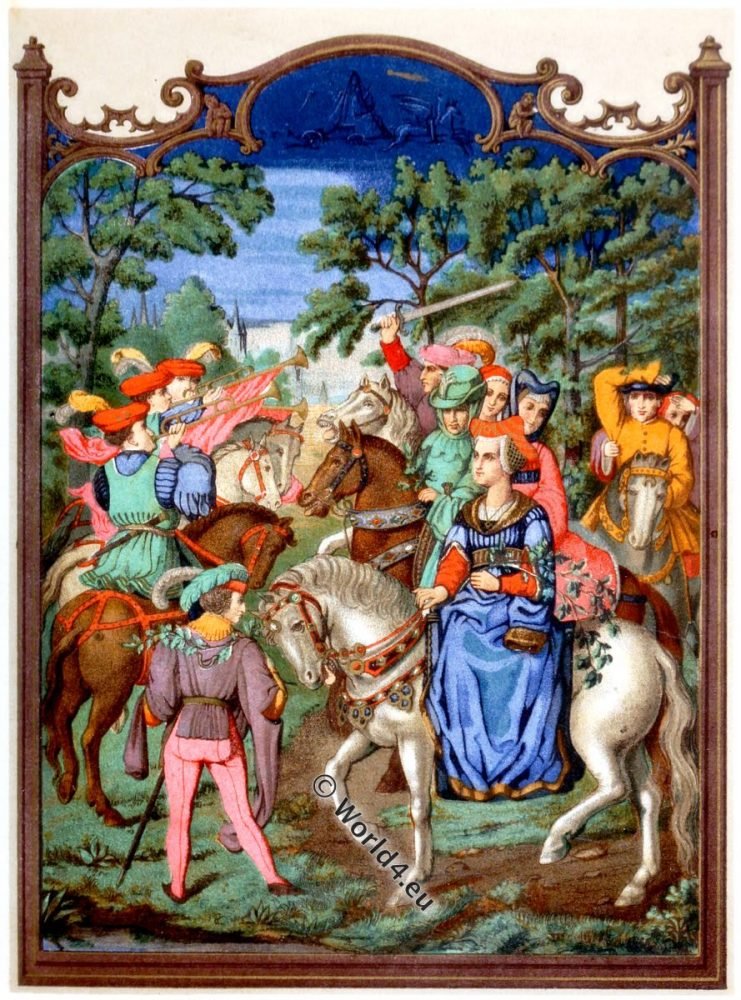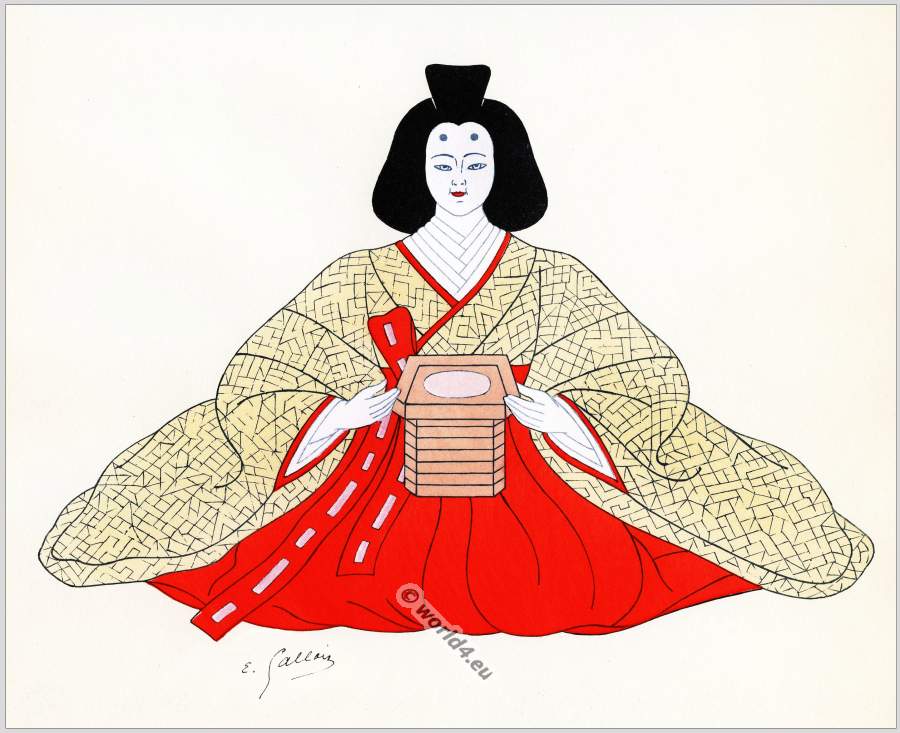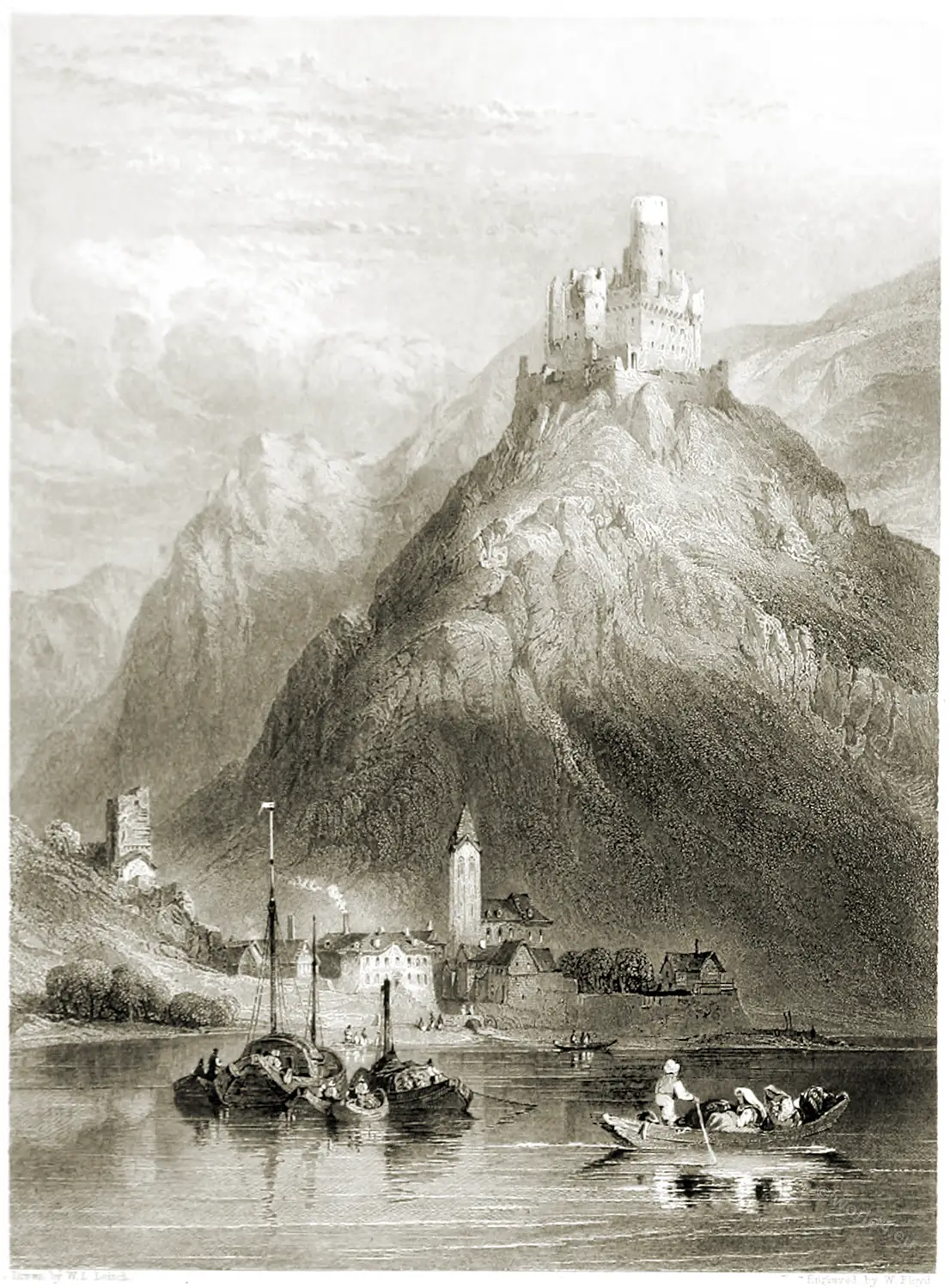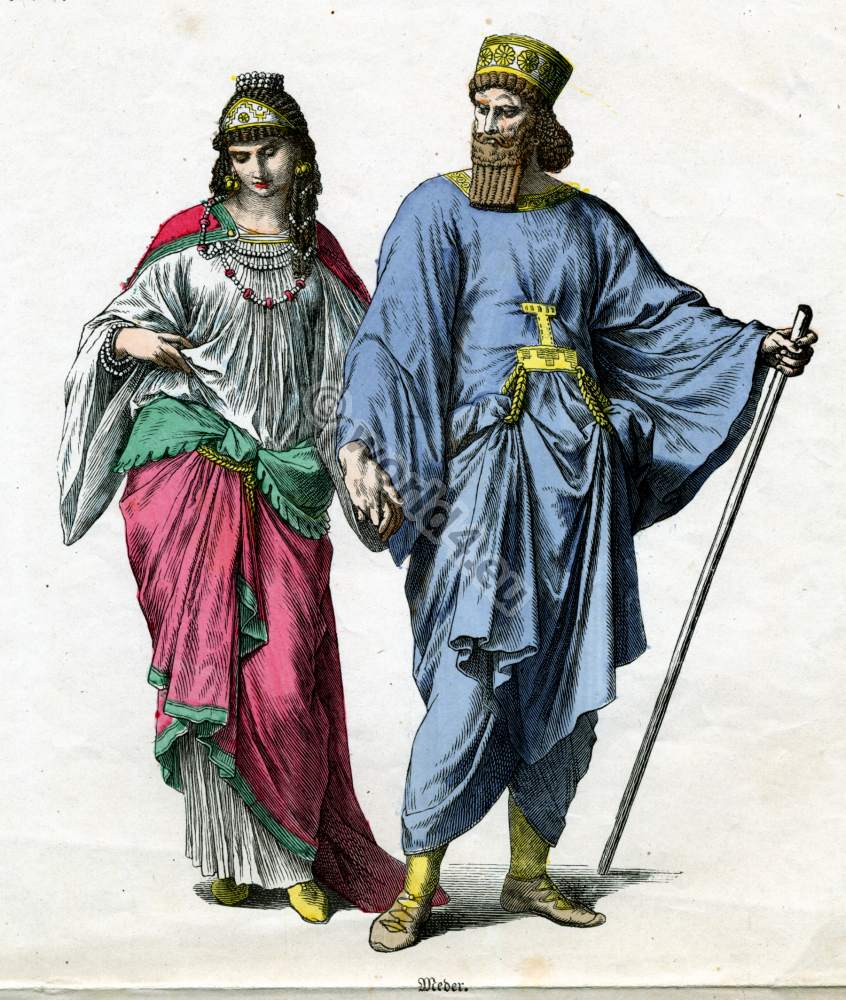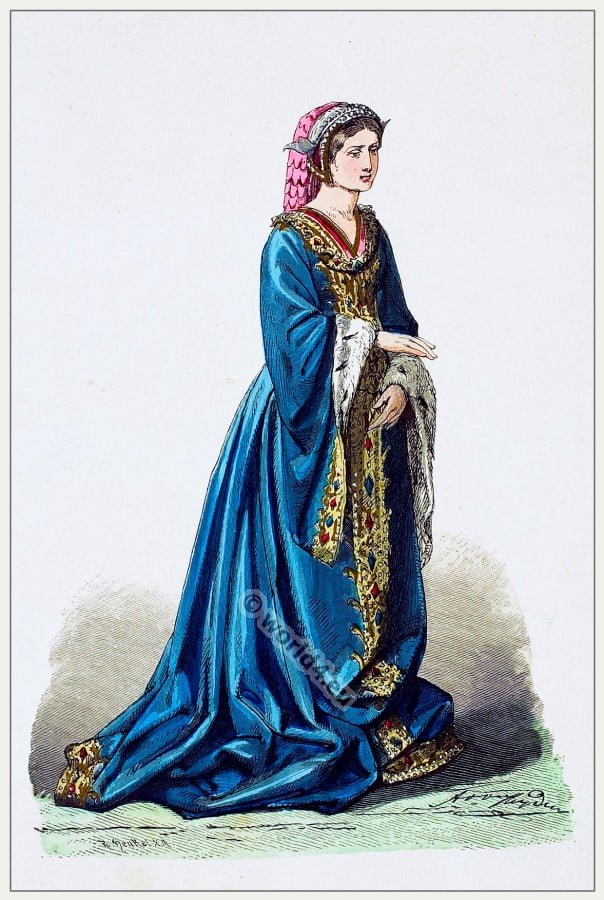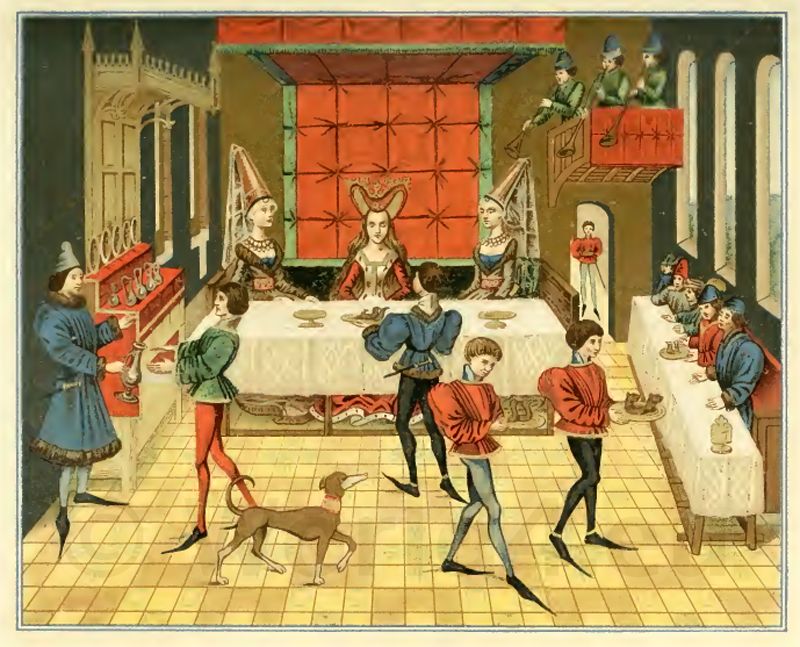VIE DU CHATEAU — DEPART POUR LA PROMENADE La Châtelaine s’avance en tète du cortege montée sur une haquenée près de laquelle se tient un page. A droite le seigneur tout habillé de vert. Des sonneurs de trompe ouvrent la marche. Miniature du Bréviaire du Cardinal Grimani, attribuee à Biblioteca Marciana de S.Marc, Venise, sig. cod. Lat. I,99. Quinzième siècle.
Life in a medieval castle. Departure for a ride.
The court society of the castle gathers for a ride.
Chatelaine advances at the head of the procession. Mounted on a hatchet near by stands a page. On the right the lord dressed in green. Trumpet and bells lead the way. Miniature of the Breviary of Cardinal Grimani, attributed to Marciana Biblioteca of S.Marc, Venice. Fifteenth century.
The Breviary of Grimani is an illuminated manuscript breviary. It was made in Flanders between 1510 and 1520. It is currently preserved at the Biblioteca Marciana in Venice. It is one of the most famous manuscripts of the Ghent-Bruges School (1475 to about 1550 ) and is illuminated by the most famous artists of the time; Alexander Bening, Simon Bening, Gerard Horenbout.
The sponsor of the manuscript is not identified. It is known that one of the early owners of the manuscript, Antonio Siciliano who was ambassador of Maximilian Sforza, Duke of Milan, in Flanders, stayed in 1514 at the court of Margaret of Austria at Mechelen. He sold it for 500 ducats in 1520 to Cardinal Domenico Grimani in Rome or Venice.
At his death, he bequeathed to his nephew Cardinal Marino Grimani. Through his descendant Giovanni Grimani, it was given to the Republic of Venice in the person of the Doge Pasqual Cicogna (1509 – 1595) which deposits it in the treasure of the basilica of San Marco. He remained there until the end of the eighteenth century. It has since been preserved in the Marciana National Library of Venice. The book featured in an inventory of April 20, 1600.
Source: Vie militaire et religieuse au moyen âge et à l’époque de la renaissance by Jacob, P. L., (Paul Lacroix) 1806-1884. Publisher Paris : Librairie de Firmin Didot Fréres.

Related
Discover more from World4 Costume Culture History
Subscribe to get the latest posts sent to your email.

